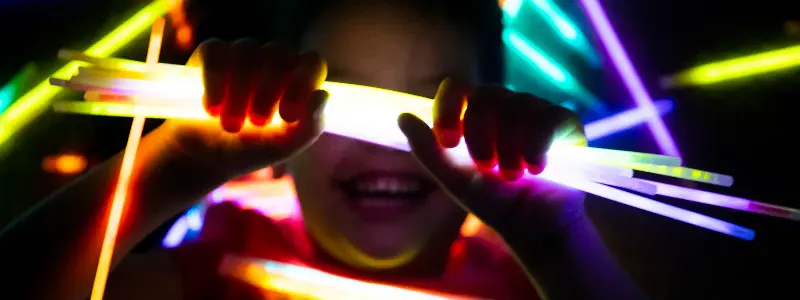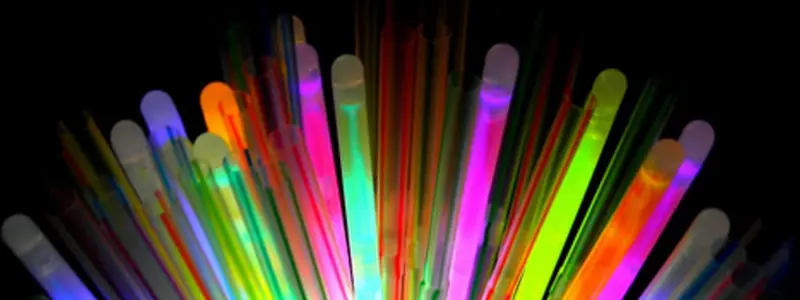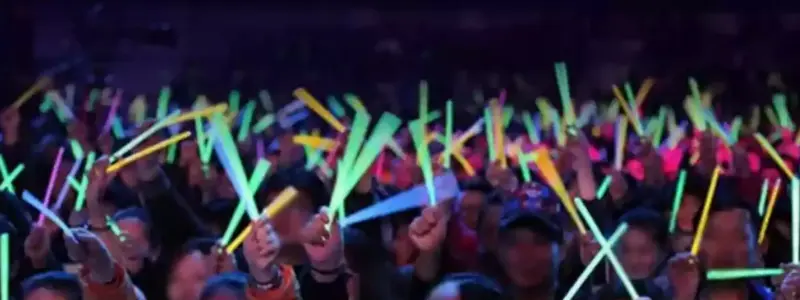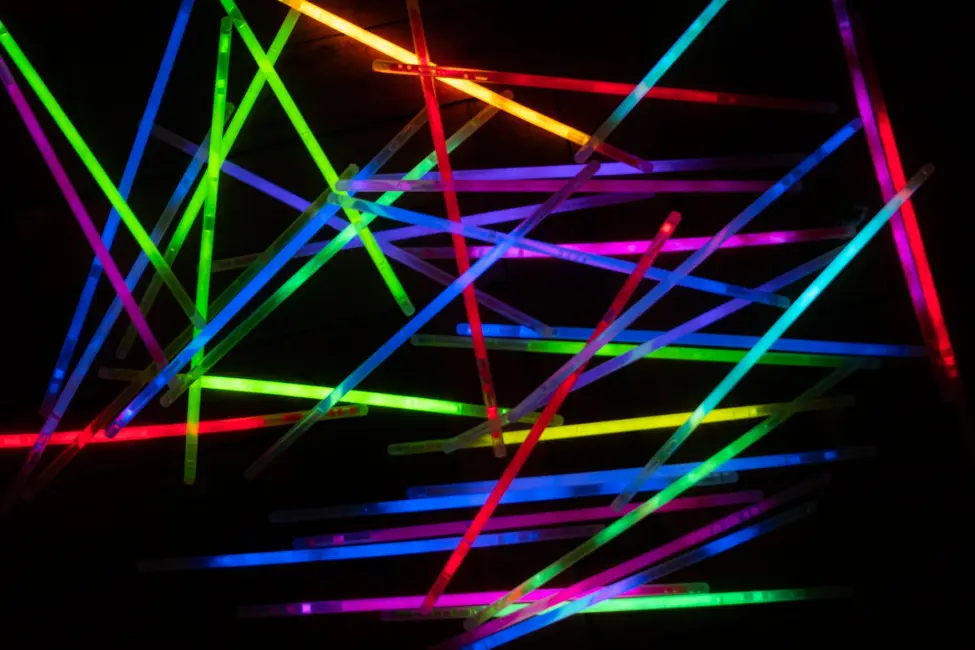Glow sticks are a popular party gimmick and often used as decorations. But what many people don't know is that these festive items have a dark side. The environmental impact of glow sticks is significant, and it's something we should all be aware of. In this article we will discuss the damage these little lights can cause and how we can reduce their impact.
Glow sticks are tubes filled with a chemiluminescent fluid. When you bend or snap the stick, the fluid is released and mixes with a catalyst causing a chemical reaction. This reaction produces the light or 'glow'. Glow sticks come in a variety of colours and used for a variety of purposes. They are often used at parties and celebrations.
When looking to dispose of a glow stick it's important to understand that to do so sustainably can be very difficult. Try to get the most use out of them rather than instantly discarding your used glow stick. Opt for better alternatives in the first place. But most importantly take care when using glow sticks as they contain harmful chemicals. Carry on reading to learn more.
Eco Friendly alternatives to glow sticks
Fortunately, there are some slightly more eco-friendly alternatives to traditional glow sticks. Although not direct replacements, they are a way to get the similar desired colourful effect. Opt for things that are reusable not disposable, and that are power saving or energy efficient. The only other thing that really emits light is bulbs. The best alternatives are usually using LED bulbs within a tube to replicate a glow stick.
Here are some alternatives to glow sticks:
- Premium Foam Stick Multi Colour
- Glowtopia Premium Glow Sticks Multicoloured
- Party Toys Bag Glow Supplies Led Stocking
It is still important to understand that these alternatives are not necessarily eco-friendly; but are still slightly better for the environment that glow sticks. When taken care of correctly and reused they should last considerably longer than normal glow sticks. This will in turn reduce wastage and environmental damage.
Although no current direct alternative to glow sticks there is a company attempting to produce one. Nyoka is in the process of introducing a light generating biocatalyst option to the market. It focuses on using living organisms such as algae to produce light. This is some great innovation and a good one to keep an eye on.

How To Relight a Glow Stick
If a glow stick has lost its light, you may be able to get it to light up again. Here are a few ways to do this:
- Put the glow stick in the sun.
- Place it in water.
- Rub the glow stick between your hands.
Putting a glow stick in the sun is the easiest way to make it light up again. The heat from the sun will cause the chemicals inside the glow stick to react, and the glow stick will start to reemit light.
Placing a glow stick in water can also make it light up again. The water will help to activate the chemicals inside the glow stick, and cause it to relight.
Rubbing a glow stick between you hand can also work. The friction from rubbing will similarly reactivate the chemicals to cause light.
These methods may work once or twice to relight your glow sticks. However the reaction will stop occurring after a while.
Can you recycle glow sticks?
A great way to reduce the environmental impact of glow sticks is to recycle them. Recycling glow sticks helps keep the toxins they contain from entering the environment. This can be done by breaking them down into their component parts. The plastic and glass outer casing can be recycled, and the lithium can be reused. This is extremely difficult to do but is the only way to dispose of glow sticks properly. The best solution is either to not purchase glow sticks or to use a more eco-friendly alternatives.

How to dispose of Punctured Glow Sticks?
If a glow stick is punctured or split, the chemicals inside can be released into the environment. If you have a punctured glow stick, you should dispose of it carefully.
If you have a punctured glow stick, the best way to dispose of it is to take it to a hazardous waste disposal site. This will ensure that the chemicals inside the glow stick are properly disposed of and don't end up in in landfill, where the chemicals can leak into the environment.
Damaged glow sticks should not be thrown in the trash. But if it is your only option, make sure to place it in a sealed container first. This will help to stop the chemicals leaching into the ground.
Environmental impact of glow stick production
The production, use and disposal of glow sticks can all impact the environment. Toxic chemical are used in the production of glow sticks. It means that during the manufacturing process harmful chemicals are released into the air and water supply.
Improper use of glow sticks can cause the outer casing to get damaged and split. This allows the toxic chemicals to be released and is another way it can affect the environment.
Then followed up by the disposal process, if not done so correctly, can again result in these toxic chemicals being released into the environment. When thrown in the trash the glow sticks will end up in landfill. Not only will they take potentially over 1000 years to decompose but the chemicals will contaminate the area. Try to do your best to recycle any used glow sticks which will avoid this from happening.
Overall you should look to not use glow sticks at all where possible. Although great to use at events, glow sticks have such a large negative effect on the environment that their use should avoided. And opt for more eco-friendly alternatives instead.

What are the harmful chemicals in glow sticks?
Glow sticks contain a variety of harmful chemicals; they include Phthalates, Phenol and Toluene. These chemicals are both harmful to humans, animals and the environment. They are released in production and incorrect disposal, but also if the sticks get damaged.
Make sure to keep yourself safe around these chemicals and dispose of them correctly via recycling at hazardous waste disposal facilities.










